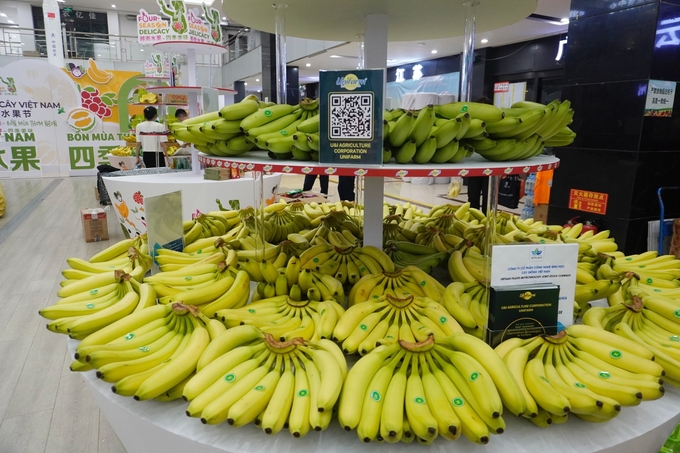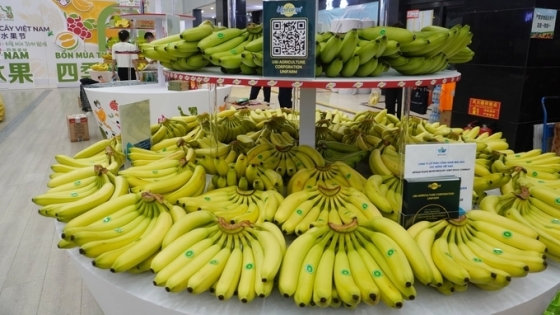(VAN) Vietnam became the largest supplier of bananas to China, with import volumes reaching 459.94 thousand tons, valued at $ 189.82 million.
The Agricultural, Forestry, and Fisheries Market News from the Ministry of Industry and Trade reported that, according to data from the Chinese Customs Authority, in the first eight months of 2024, China’s banana imports reached approximately 1.13 million tons, valued at $ 592.1 million, a decrease of 7.9% in volume and 23% in value compared to the same period last year.
During the first eight months of 2024, the average import price of bananas in China from global sources reached $ 524/ton, down 16.3% compared to the same period last year. Notably, the average import price of bananas from most suppliers to China decreased, except for Mexico.

Vietnam has become the largest supplier of bananas to China in the first eight months of 2024. Photo: Hong Tham.
There has been a shift in the structure of banana suppliers to the Chinese market. Vietnam emerged as the largest supplier of bananas to China in the first eight months of 2024, with import volumes reaching 459.94 thousand tons, valued at $ 189.82 million, an increase of 19.6% in volume and 0.8% in value compared to the same period last year.
Vietnam’s share of China’s total banana imports increased from 31.33% in the first eight months of 2023 to 40.71% in the same period of 2024.
Similarly, in the first eight months of 2024, China significantly increased banana imports from markets like Laos, Mexico, and Indonesia.
In contrast, China reduced banana imports from the Philippines and Cambodia. This means that Vietnam’s banana industry has overtaken the Philippines as the top supplier and is gaining an advantage in the Chinese market.
The primary reason is believed to be unfavourable weather conditions in the Philippines, which led to reduced production and higher prices. Although Philippine bananas remain popular in China due to their flavour, the shortage of supply and higher costs have allowed Vietnam to expand its market share. Additionally, geopolitical tensions have also affected China’s reduction in banana imports from the Philippines.
Bananas are one of the most economically important fruit crops in the Philippines. The majority of the bananas grown in the country are of the Cavendish variety, followed by Saba and Lakatan. Other varieties include Latundan, Bungulan, Señorita, and others. Cavendish is mainly produced as an export product, while the Saba/Cardaba variety is often processed into banana chips for export, and Lakatan is primarily consumed as fresh fruit in the domestic market.
Mindanao leads the banana production area in the Philippines. Although Cavendish only occupies 19% of the total area (86,000 ha), its high planting density and higher yield contribute to 50-60% of the total banana production. Saba occupies 41% (186,148 ha), while 14% of the area is planted with Lakatan, Latundan, and other banana varieties.
In 2023, the total land area used for banana cultivation in the Philippines was approximately 448,900 ha, with production reaching around 9.02 million tons.
The Philippine banana industry has been focusing on several general strategies to improve its productivity and competitiveness, including expanding production areas, restoring existing production areas, promoting bananas in local and export markets, supporting small-scale banana growers, and emphasizing disease management.
Agriculture News | Agri Products Price



